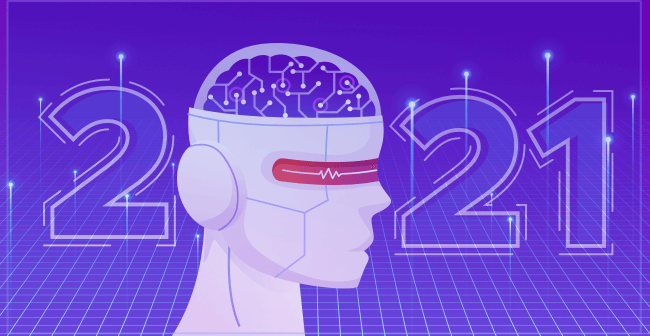Mobile technology has become an integral part of everyday life, making it essential to optimize mobile infrastructure for seamless user experiences. This is especially true for businesses, as mobile networks, applications, and systems must be optimized for smooth customer interactions. This article provides tips on how to optimize your mobile infrastructure effectively.
Invest In Mobile Device Management (MDM) Software
If you've been managing a mobile device infrastructure, you know how complex it can be to keep up with the ever-changing requirements of mobile users. MDM software makes managing your mobile devices and protecting your company's data easier.
This type of software helps you keep track of mobile device inventory, enforce security policies, and manage applications on mobile devices. It also enables you to comply with any applicable regulations.
Today, many MDM platforms are available for businesses looking to optimize their mobile infrastructures. Investing in MDM software can help you optimize your mobile infrastructure by:
- Streamlining device setup and configuration: MDM software can automate setting up and configuring mobile devices, including security policies and other configurations. This makes it easier to get new gadgets up and running quickly and efficiently.
- Enhancing security: MDM software can help ensure your mobile devices comply with security policies. It can also help you detect and respond to any security threats on time.
- Improving user experience: MDM software can help you optimize the user experience on mobile devices. This includes allowing users to access the data they need when needed and ensuring that any necessary updates are installed on the devices on time.
- Reducing costs: MDM software can help you reduce costs by streamlining device setup and configuration, eliminating manual processes, and providing detailed reporting capabilities. This can help you better allocate resources and save money in the long run.
Keep Your Infrastructure Up To Date
Over the past few decades, mobile infrastructure has been experiencing rapid changes and advancements in technology. According to the best IT company, by keeping your mobile infrastructure up to date, you can rest assured that it runs optimally and efficiently.

To see that your mobile infrastructure is up to date, you should update and upgrade your systems regularly. There are various ways to do this. These include researching what new technologies are available and incorporating them into your existing infrastructure, investing in new hardware and software, and staying up to date on security updates and patches.
Updating your infrastructure can also improve the user experience, as new technologies may improve the speed and reliability of your services. Additionally, it can help protect your system from potential threats and vulnerabilities. Finally, you can save time and money in the long run by reducing the need for costly repairs or replacements.
Engage Users With Push Notifications
Push notifications are a proven way to engage users and inform them about critical updates. Text messages are sent directly to a user's device, typically via an app. The notifications can be for alerts, promotions, and more.
By utilizing push notifications, you can create a more personalized experience for users, increasing their engagement with the app. Push notifications can also help keep them informed of important updates, such as changes to the app, new features, or news related to the app.
In addition, utilizing push notifications can optimize mobile infrastructure by reducing the need for other forms of communication. For example, push notifications can send the same information directly to a user's device rather than relying on emails or SMS messages to inform users of important updates. This can reduce the time and resources needed to communicate with users, ultimately improving the efficiency of the mobile infrastructure.
Track User Behavior With Mobile Analytics
Mobile analytics is a means to measure user behavior and how they interact with your app or website. With these data, you can identify user trends, determine the most popular features, and point out improvement areas. The basic process of mobile analytics is pretty simple. First, you must install a tracking tool from a mobile analytics provider.
This tool will collect user data such as page views, session lengths, and other usage metrics. You can then use these data to analyze user behavior and identify areas of improvement. You can also use this data to optimize your mobile infrastructure. For example, if users have difficulty loading a particular page, you can adjust the server configuration to accommodate this usage pattern better.
Moreover, you can use the analytics data to change your mobile website or app design by adding more user-friendly navigation options or reducing the required steps to complete an action.
Implement Content Delivery Networks (CDNs)
A content delivery network (CDN) is a distributed server system that delivers content to users based on their geographical location. By caching and providing content from a server nearest to the user, CDNs reduce latency and improve the overall user experience.
This is particularly crucial for mobile infrastructure, as users on mobile devices often need faster connections or have limited data plans. Integrating a CDN can optimize your mobile infrastructure by:
- Reducing latency: Delivering content from a server closer to the user can significantly decrease the time it takes to load on a mobile device, resulting in faster load times and an improved user experience.
- Lowering server load: Offloading content delivery to a CDN can reduce the load on your origin server, which can help maintain performance during traffic spikes and prevent server crashes.
- Improving content delivery speed: By distributing content across multiple servers around the world, CDNs ensure that users receive content quickly, regardless of their location.
- Enhancing security: CDNs can offer additional security measures, such as protection against distributed denial-of-service attacks, by absorbing malicious traffic and preventing it from reaching your origin server.
To implement a CDN for your mobile infrastructure, research various CDN providers and select one that meets your requirements in terms of geographical coverage, performance, and cost. By leveraging the benefits of a CDN, you can significantly optimize your mobile infrastructure and provide a better user experience for your customers.
Optimize For Popular Platforms And Devices
You should optimize your mobile infrastructure for popular platforms and devices. This means creating separate versions of your app for each platform and device and making sure they are compatible with the latest versions of each platform and device.
Consider using various tools, such as cross-platform development frameworks, to ensure your app functions appropriately across multiple platforms. Additionally, you should optimize your content for SEO and each platform and device, as this will help reduce loading times and improve the overall user experience.
Finally, it is essential to consider the user experience when optimizing your mobile infrastructure. This includes ensuring that your app is intuitive and easy to use and provides a seamless user experience across all platforms and devices. Additionally, it's best to consider optimizing for multiple screen sizes and orientations, as this ensures your app looks great on all devices and platforms.
Leverage Cloud Services And Mobile App Stores
Over the past few decades, cloud services have become integral to mobile infrastructure, allowing organizations to access resources quickly, securely, and cost-effectively. App stores, such as the Apple App Store and Google Play, also provide a platform for developers to distribute their applications to a large and diverse audience.
To optimize your mobile infrastructure through cloud services and mobile app stores, consider the following:
- Leverage cloud services to store, manage and share data. Cloud-based storage, database, and analytics solutions can help your organization save time and money by eliminating the need to purchase, maintain and manage physical hardware.
- Utilize mobile app stores to distribute and promote your applications. Submitting your apps to the various app stores allows you to reach a broader audience and gain valuable visibility for your products.
- Use cloud-based services to create a secure, seamless experience for your users. By leveraging cloud-based authentication, authorization, and encryption services, you can ensure your users' data is secure and their experience is uninterrupted.
- Take advantage of cloud services to develop and deploy applications. Cloud-based development and deployment services can reduce development time and costs, allowing you to scale applications quickly and easily.
- Leverage mobile app stores to track usage and performance. By monitoring usage and performance metrics, you can identify areas of improvement and optimize your applications accordingly.
Organizations can optimize their mobile infrastructure using cloud services and app stores to provide users with a secure, seamless experience.
Secure Your Infrastructure With Mobile Device Encryption
Cybersecurity is a topic worth considering when it comes to mobile infrastructure. Recently, cases of data breaches have been on the rise, where hackers have used mobile devices to steal sensitive information. Therefore, among the many steps to protect your mobile infrastructure, one of the most important is to use mobile device encryption.
Mobile device encryption helps build a secure IT infrastructure by scrambling information into an unreadable form. This means that even if an attacker somehow manages to access your device, they cannot access the stored data. Additionally, data stored on the device can be backed up securely, ensuring it is not lost in a security breach. Furthermore, encryption can help ensure that data is not accessed without authorization, as only authorized users can decrypt the data.
Conclusion
Improving your mobile infrastructure can be a challenging task. There are several components to consider, from hardware to software. However, following the tips explained in this article, you can optimize your mobile infrastructure to ensure a seamless user experience. From investing in mobile device management software to leveraging cloud services and mobile app stores, you can try many ways to maximize the efficiency of your mobile infrastructure.















Leave a Reply